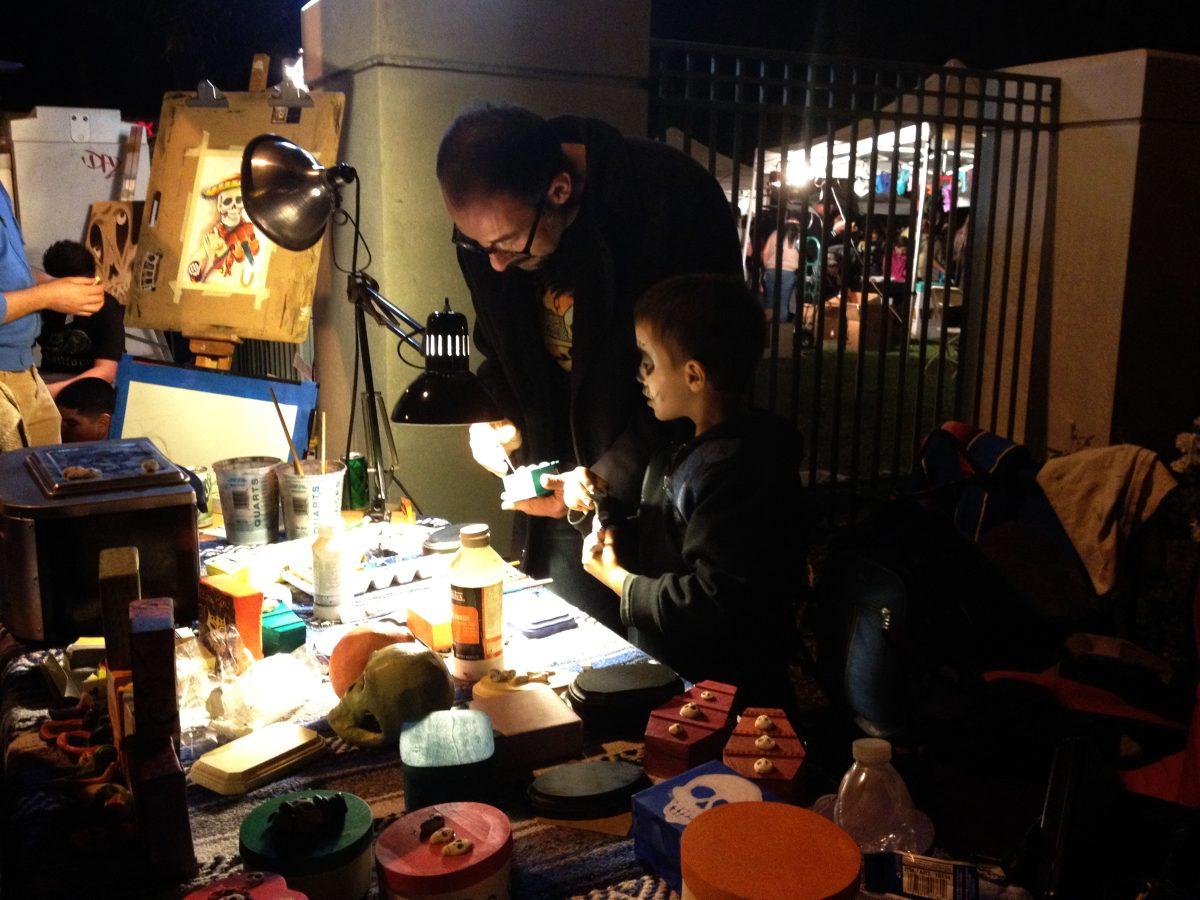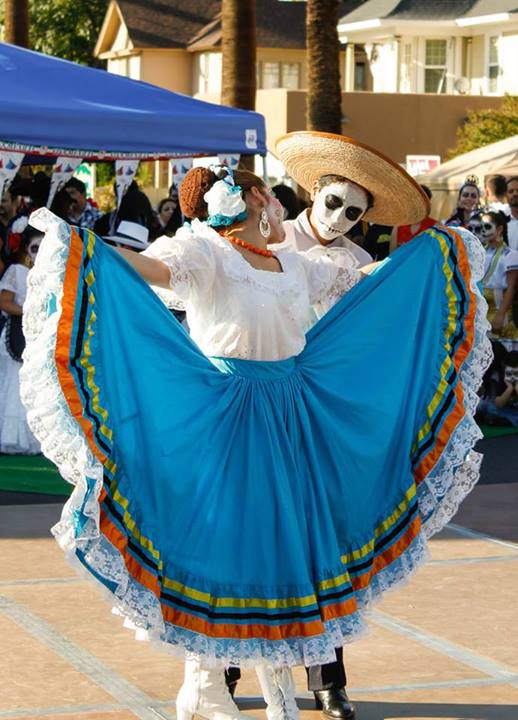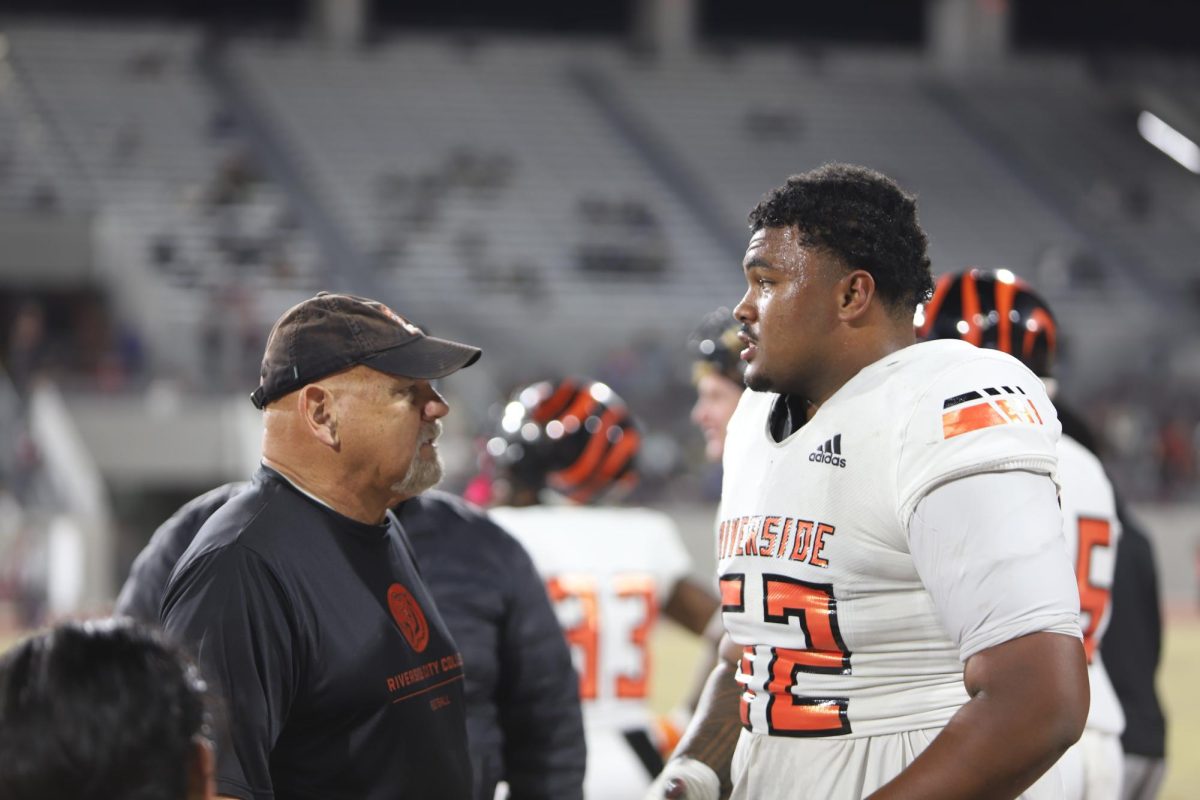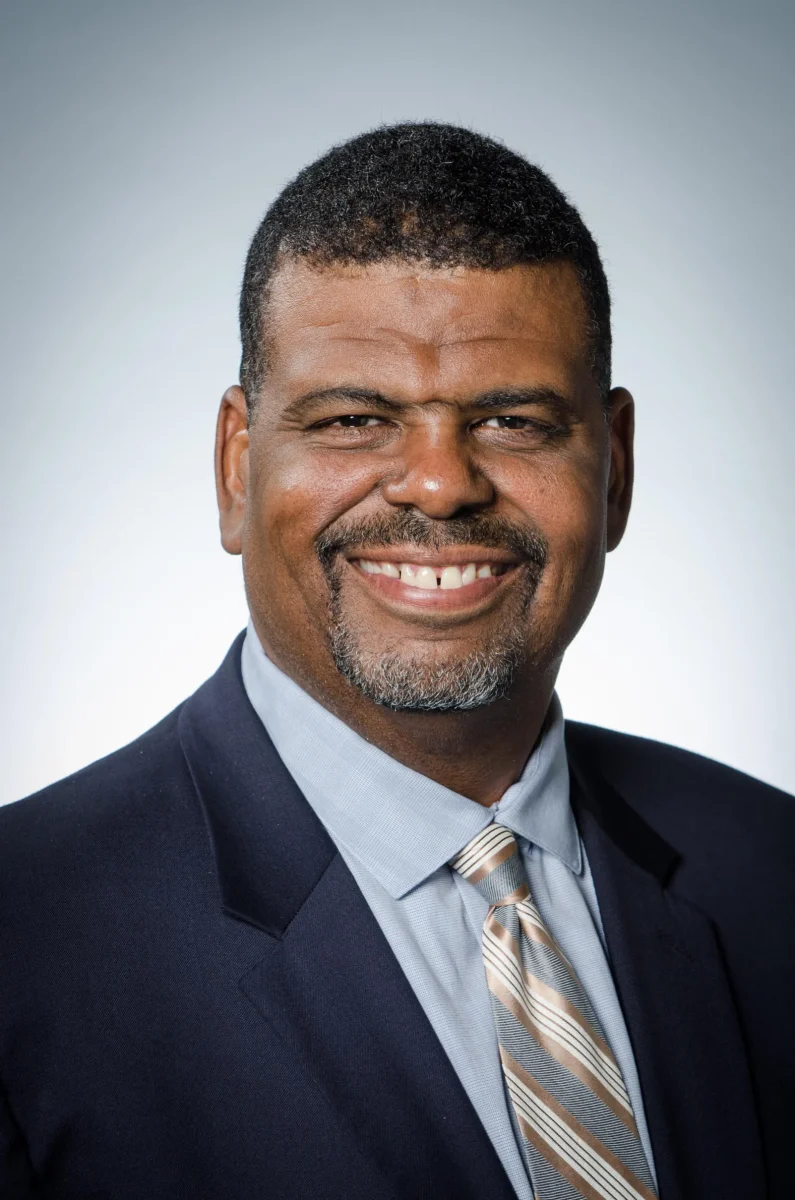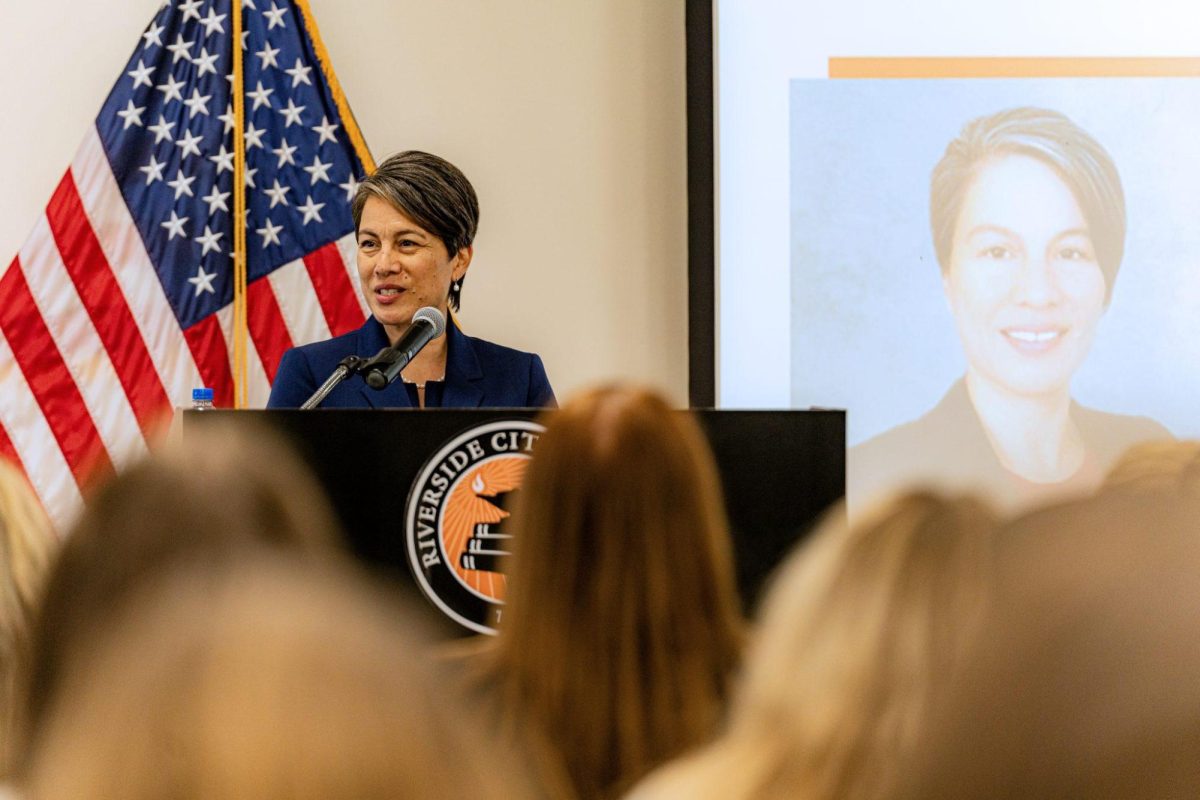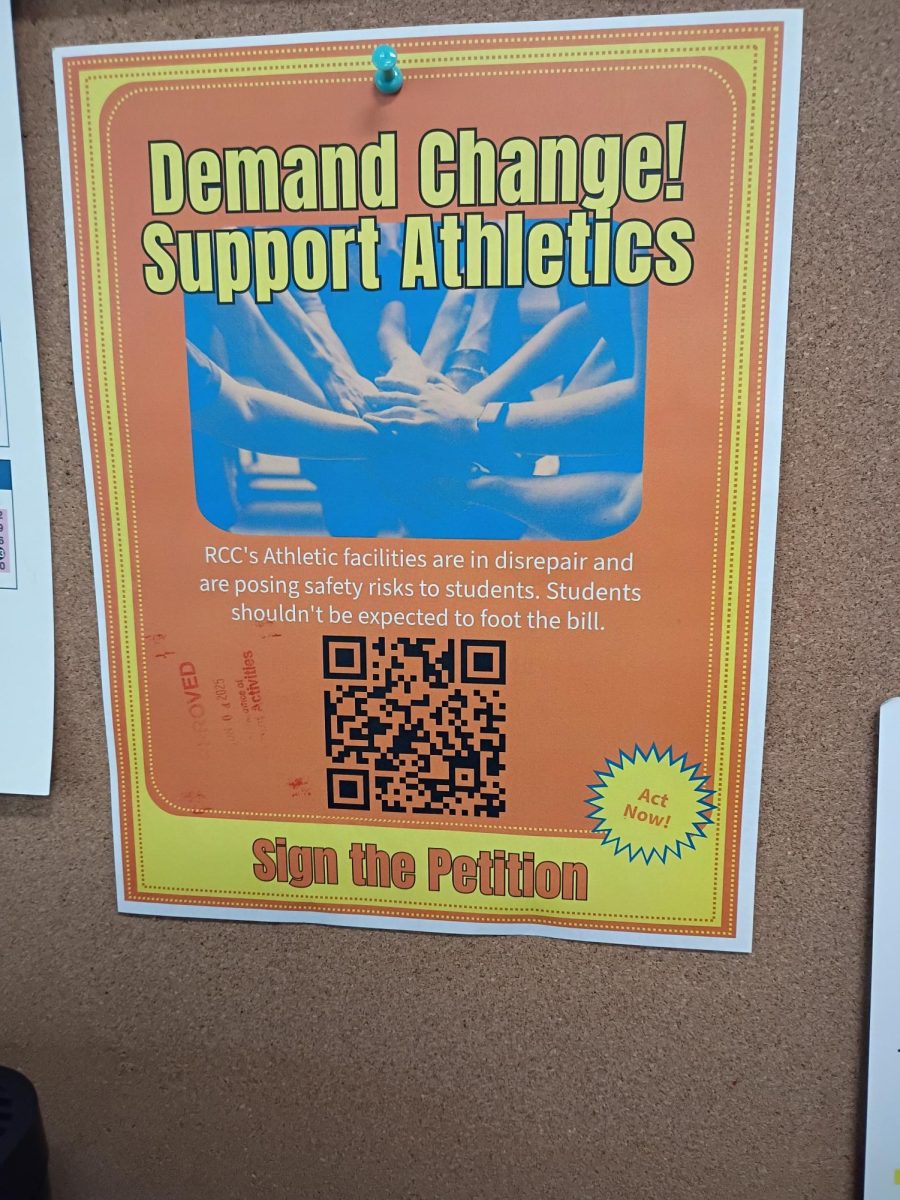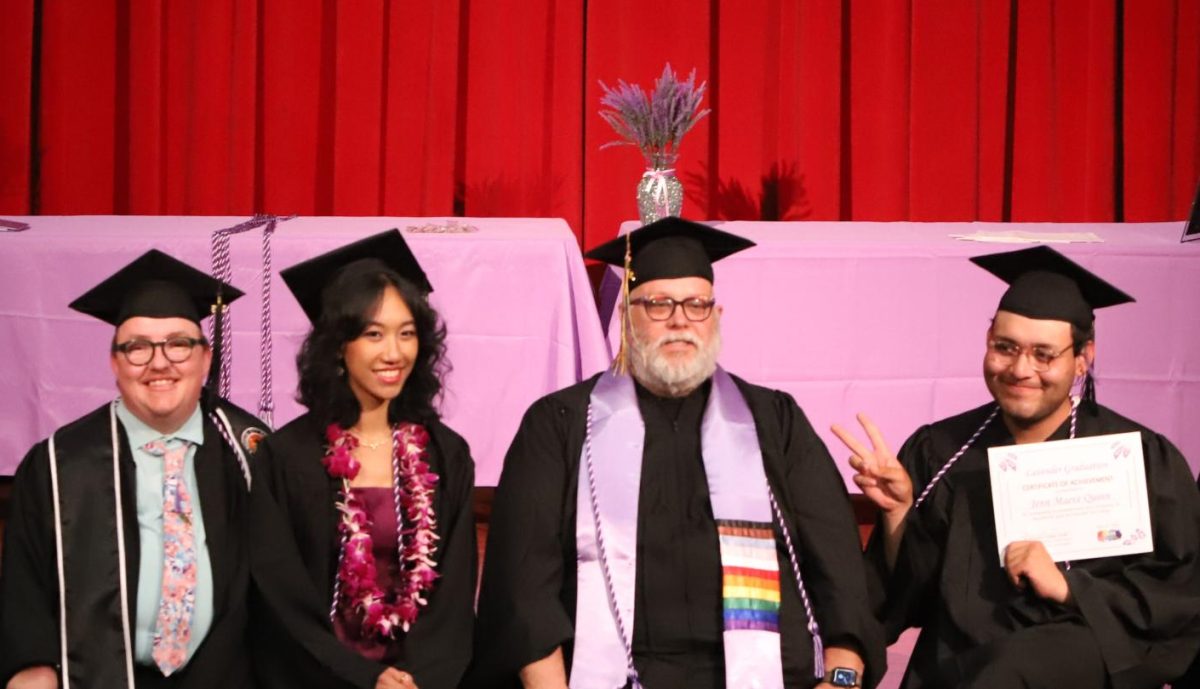ALEJANDRA GARCIA | STAFF WRITER
Downtown Riverside celebrated its fifth annual Dia de los Muertos (Day of the Dead) Celebration on Nov. 2.
Families came out to remember their loved ones who passed on, others came to pay their respects and celebrate one of Mexico’s oldest traditions.
Among the many kinds of activities were tribal dancers, the Ballet Folklórico of Riverside, live entertainment and DJ sets for everyone to join in and dance the night away.
In midst of the haunting aromas and vendors were artists scattered all over Market Street.
And when it comes to the Dia de los Muertos, everyone is an artist.
Whether it’s families arranging altars or people painting their faces, every kind of artist came out this night.
Diversity was the main theme of the night: there were different kinds of people of all ethnicities, different kinds of face paints and different kinds of art.
From contemporary art like those cartoony sugar skulls to classic folk art like that of the great Mexican artist, José Guadalupe Posada, who was a popular engraver of the late ninetieth and early twentieth centuries. He’s famously known for his Calaveras (skulls.) Posada has been a very influential artist for many artists in Latin America. This year would mark his 100th anniversary since his death.
A group of the young artists in the celebration were from Norte Vista High School. Carole Lopez, an art teacher, lead her students to create something for the celebration.
For Lopez, it’s important that her students participate in this celebration even if they aren’t of Mexican descent.
“They learn the cultural significance behind (Dia de los Muertos), said Lopez. “They research and create (their art), and put their personal meaning (into it)…and art should have meaning.”
Lopez is not of Mexican descent, but she married into a Mexican-American family, and upon adopting her last name she also took up thier cultural heritage for her children.
Another of Lopez’s students was Jonathan Perez. He created a calaca (skull) with traditional markings and added his own twist by adding a blond wig.
“I started (creating art) when I was seven,” said Perez. “My family would use clay molds of their faces to create skulls.”
Perez’s family has been celebrating this tradition for many years, and they have passed it on to him.
“It’s important,” said Perez. “It helps to never forget the ones who have passed on.”
Between a sea of catrinas and calacas were a man and a child painting small coffins with tiny skulls attached.
The booth’s owner, Agustín Equihua Ortiz was along with his son painting large canvases, colorful miniature coffins and heart shaped boxes.
There were all kinds of knick knacks that one can find in Mexico this time of year.
For Equihua Ortiz, Dia de los Muertos runs deep within his family. Coming from Michoacán, Mexico, where the tradition is has deep roots; he finds it extremely important to preserve his cultural heritage.
“Dia de los muertos represents to me many things at many levels,” said Equihua Ortiz. “One level it’s my cultural heritage, also I think it’s very unique celebration. You’re remembering you’re dead, but it’s very celebratory. It’s a bridge for other people, because it’s a death is common between us.”
“It’s very old tradition, and it’s becoming new. With new music and art, people get to express that. It’s a cultural link for Mexican Americans, and it gives (them) something to identify with.” said Equihua Ortiz.
His mother was the one who passed this tradition to Equihua Ortiz and his siblings.
This ancient tradition is expanding globally, as people are becoming more intrigued by other cultures beside their own. And with a topic so common, which is death, people of different backgrounds can remember their loved ones in a new way.
“This tradition gives an opportunity to accept death,” said Equihua Ortiz. “Our own mortality is our best adviser, to do things now. Let’s embrace it and celebrate it.”

